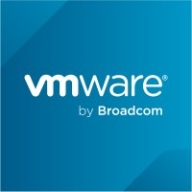

Microsoft Configuration Manager and VMware vCenter compete in the realm of IT management solutions, focused on device and virtual environment management respectively. VMware vCenter has the upper hand in managing virtual environments with its emphasis on virtualization capabilities, while Microsoft Configuration Manager stands out for its integration and automation within Microsoft-focused ecosystems.
Features: Microsoft Configuration Manager features software deployment, patch management, and centralized device management. It offers robust automation of IT tasks, compliance maintenance, and strong integration with Microsoft products. VMware vCenter excels in centralized management of virtual environments, offering high availability and performance monitoring. It supports easy VM migration and resource adjustment, making it ideal for virtualization management.
Room for Improvement: Microsoft Configuration Manager can improve its resource consumption, remote client management, and integration with third-party applications. Configuration complexity and limited third-party support are areas to consider. VMware vCenter faces challenges with licensing costs post-Broadcom acquisition, requiring streamlined features and better dashboard and support options to avoid hidden costs.
Ease of Deployment and Customer Service: Microsoft Configuration Manager primarily operates on-premises, featuring extensive online documentation despite reports of slow support. VMware vCenter deploys both on-premises and in private clouds, offering reliable customer service and documentation, although Broadcom's pricing adjustments raise future support concerns.
Pricing and ROI: Microsoft Configuration Manager is seen as costly for smaller businesses but offers significant ROI through automation and integration within Microsoft environments. VMware vCenter's high pricing under Broadcom's subscription model poses challenges for smaller enterprises, though larger ones find its virtualization features valuable. Both solutions promise strategic ROI, but vCenter users worry about rising costs affecting future service viability.
Their response time and first-level support quality need improvement.
For technical support from Microsoft, I would rate them a nine.
VMware vCenter manages high availability effectively.
The technical support is good.
The product is suitable for our size, handling 800 devices.
On a scale of one to ten, I would rate its scalability as ten.
The scalability is good in vCenter.
The solution is completely scalable as we can increase any host with great simplicity.
There were misconfigurations by our team rather than issues with the product itself.
We have not faced any issues after upgrading VMware vCenter, whether on the vCenter or any host.
A better command line interface for Microsoft Configuration Manager would be an additional feature I would to see in the future to make it closer to a perfect score.
Improvements are needed for servers. Servers are still not getting it properly, so we could add the servers in Microsoft Configuration Manager for things such as OS deployment and Autopilot as well.
The licensing model has shifted, leading to higher costs, particularly for smaller organizations.
The license cost has increased significantly, which is the primary negative aspect of VMware vCenter.
Better redundancy options can be achieved by using multiple vCenter machines.
The setup cost is considered sufficient.
The pricing for Microsoft Configuration Manager is okay for me.
The licensing model now requires purchasing 96-core solutions, even if fewer cores are needed, adding to the cost burden.
The most valuable features I find in Microsoft Configuration Manager are mostly patching, deploying software, deploying images, and running custom scripts.
If I want to get a fetch report for anything, such as hardware-related issues or group policy-related issues, I need to fetch the report by using SCCM's scripting language and remediation part.
The product valuable for deployment recovery.
High availability is employed so if an ESXi server is down, the VM is supported on another ESXi on other servers.
The high availability feature is particularly valuable when a host goes down or experiences high usage, as it automatically migrates VMs to other hosts to balance performance.
VMware vCenter is excellent for managing and monitoring hypervisors, specifically with features like live migration, storage vMotion, and host vMotion.
| Product | Market Share (%) |
|---|---|
| VMware vCenter | 1.0% |
| Microsoft Configuration Manager | 5.2% |
| Other | 93.8% |


| Company Size | Count |
|---|---|
| Small Business | 20 |
| Midsize Enterprise | 13 |
| Large Enterprise | 64 |
| Company Size | Count |
|---|---|
| Small Business | 15 |
| Midsize Enterprise | 5 |
| Large Enterprise | 18 |
Microsoft Configuration Manager streamlines IT management with features such as software deployment, patch management, and automation, centralizing operations for Windows environments. Integration with Microsoft products allows efficient oversight of workstations and servers.
Microsoft Configuration Manager provides comprehensive IT management, offering software deployment, patch management, and application pushing. Automation reduces manual tasks, ensuring consistency across systems. Centralized management enables standardized OS deployments, application updates, and configuration integrity. Integration with Microsoft products facilitates seamless operations, while hardware and software inventory, compliance reporting, and remote control functions enhance IT management. Users seek improvements in application deployment for those without deep scripting knowledge and desire better WSUS control, PowerShell and Intune integration, Linux compatibility, and user interface enhancements. Performance improvements are requested for remote user management and third-party application support.
What features enhance Microsoft Configuration Manager?Microsoft Configuration Manager is widely implemented in organizations to manage Windows workstations and servers. It is essential for deploying operating systems and applications, managing software updates, and conducting hardware and software inventories. The tool is crucial for endpoint and configuration management, ensuring compliance, and automating processes like patching and vulnerability management. Industries such as finance, healthcare, and education rely on Microsoft Configuration Manager to keep systems secure and operational, adapting it to address their specific needs and challenges in maintaining diversified IT environments.
VMware vCenter provides centralized management for virtual machines, offering enhanced resource control, high availability, and data protection. Its integration with NSX and vSAN simplifies infrastructure management, although improvements in pricing, licensing, and technical support are needed.
VMware vCenter streamlines the management of virtual infrastructures, facilitating scalability and elasticity through features like DRS, vMotion, and snapshot capabilities. While users appreciate its centralized control and extensive integration options, complexities in interface and upgrades are seen as challenges. Issues like fragmented licensing, difficult Fault Tolerance management, and high resource demands have been highlighted, alongside the need for enhanced security, monitoring, and seamless cloud integration. vCenter is widely used in data centers for overseeing large virtual environments, integrating cloud services, and providing infrastructure as a service.
What are the main features of VMware vCenter?
What benefits and ROI should users expect?
Industries such as IT, finance, healthcare, and government deploy VMware vCenter to manage their extensive virtual environments. Users rely on its automation and centralized management capabilities to ensure high performance and uptime in data center operations, often leveraging it to integrate with cloud services.
We monitor all Server Monitoring reviews to prevent fraudulent reviews and keep review quality high. We do not post reviews by company employees or direct competitors. We validate each review for authenticity via cross-reference with LinkedIn, and personal follow-up with the reviewer when necessary.